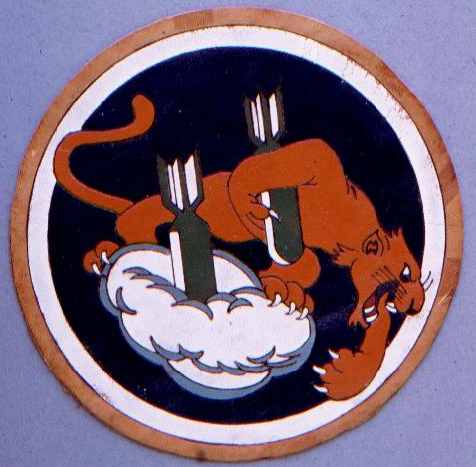|
The 340th bomb group of B-25 Mitchell bombers flew its last
bombing mission in Europe April 26, slightly more than 25 months after
it went into action in Tunisia supporting the British Eighth army in
the assault on the Mareth Line.
Commanded by Col. Willis F. Chapman, San Antonio, Texas, in the
last half of its combat history - from March 15, 1944, to the German
surrender - the group specialized largely in two types of bombing,
close support and "bridge-busting".
Though it was one of the last medium bomb groups to enter the
Tunisian campaign it had chalked up the highest "bomb tonnage dropped"
mark for medium bomber units in the theater by war's end.
Twice the group was cited by the War Department as a Distinguished
Unit, first for remarkably effective close support bombing for the
British Eighth army in Tunisia and the Eighth and American Seventh in
Sicily. The second citation came a year later for sinking the enemy
cruiser Taranto in La Spezia harbor, Sept. 23, 1944.
In the course of its 898 combat missions the 340th group attacked
targets in Tunisia, Pantelleria, Lampedusa, Sicily, Italy, Bulgaria,
Albania, Yugoslavia, Greece, southern France and Austria. Some of its
most effective operations, however, were in themselves campaigns -
notably the 'Operation Strangle'; the softening-up of southern France
before August 15th "D" day; the Battle of the Brenner", and the final
blitz in the Po Valley beginning April 8.
Operation Strangle, lasting from late January, 1944, to the end of
May, 1944, was a throttling of German communications in central and
north Italy, forcing the Germans to abandon Rome and retreat northwards
through Italy. In this operation the 340th bombed repeatedly road and
rail bridges, viaducts and tunnels, and created road blocks. At the
same time it was giving much-needed help to the Anzio beachhead troops.
The group's operations in the Battle of the Brenner railway was
almost identically the same sort of campaign, this time the object
being to pinch off supplies from the Germans in their then
near-impregnable Gothic line. Besides chopping up this fanatically
defended railroad artery from the Reich to the Po valley, the campaign
served to lock the enemy up in Italy where in April, 1945, he was
forced to surrender or die.
In this final Allied offensive in Italy the 340th group flew more
missions than any other medium bomber unit, and scored telling blows on
German troop concentrations, strong points, and bridges and ferry
crossings.
Throughout its entire combat history the 340th maintained a
bombing accuracy record that grew progressively better as each new
Mediterranean campaign unfolded. Largely responsible for this result
was the intensive training-during combat program instituted by Col.
Chapman in March, 1944, and carried through until the end of the war.
Two previous 340th group commanders were shot down in action while
leading the unit. The first commanding officer, Col. William C. Mills
of Mooresville, N.C., has been missing since an attack on Furnay,
Tunisia, May 6, 1943. Another commander, Col. Charles D. Jones,
Jackson, Miss., was shot down March 10, 1944, in an attack on the
Littorio (Rome) marshalling yards. A prisoner of war in Italy, Germany
and Poland, Col. Jones was liberated by advancing American troops in
the last days of the war.
Courtesy Nick Loveless 486 BS
|
|








